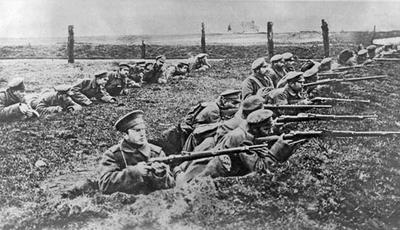

Todays US operational art can be used to analyze and understand the German operations. The German commander Hindenburg continuously arranged forces in time, space, and purpose while he pursued the strategic objective of the German Army High Command. The author identifies that the German 8th Army applied at Tannenberg 1914 operational art as US doctrine understands it today. At the same time they reflect aspects of the respective leadership philosophies of both countries.

Update: Have since played this a few times and enjoy it. The core rules come in at 8 pages, with another 6 scenario specific rules.
#BATTLE OF TANNENBERG 1914 SERIES#
These criteria encompass facets of German doctrine in 1914 and current US doctrine. Tannenberg is one of two scenarios presented in the first of the series by Ted Raicer, the other being Marne. Second, this monograph analyzes the German battles at Tannenberg 1914 through the criteria of risk, trust, and synchronization. This section also considers the impact of German Auftragstaktik and US mission command on planning and execution of operations. The German political, social, and military constellations and their influence on German operational thought are of special consideration in this process.

First, the author describes and compares German operational thought in 1914 with todays US doctrinal understanding of operational art. The 1st Cavalry Division advanced to Gerdauen, with reconnaissance. On 25 August the I Reserve Corps and the XVII Corps were moving from the area: Schippenbeil-Friedland to the south. I.-WHAT HAPPENED IN REAR OF THE GERMAN EIGHTH ARMY FROM 20 TO 31 AUGUST 1914. This monograph answers the question if the German 8th Army applied operational art as described in US doctrine today. PROTECTION OF THE REAR OF THE GERMAN EIGHTH ARMY, DURING THE BATTLE OF TANNENBERG. 17 August 1914) was a career officer in the cavalry of the Imperial Russian Army and a general during the Russo-Japanese War and World War I. Aleksndr Vasl’evi Samsnov 14 November O.S. It took place in August 1914 and resulted in a decisive victory for the Germans, who were able to defeat a much larger Russian force. Aleksandr Vasilyevich Samsonov ( Russian:, tr. In 1914, the German 8th Army in Eastern Prussia pursued the strategic goal of defending Prussia in order to enable decisive operations of German forces west of Germany. The Battle of Tannenberg was a major conflict in World War I between the Russian Empire and Germany.
#BATTLE OF TANNENBERG 1914 FULL#
On the grand strategic level, the tsarist empire's major problem involved making sure its major continental ally, France, was not forced out of the war before Russia could bring its full strength to bear. Abstract: Operational art is a doctrinal term used by the United States US Army to describe the effort of military leaders to arrange military actions in pursuit of strategic objectives. The Battle of Tannenberg, in August 1914, was the consequence of Russia 's commitment to an immediate offensive during World War I.


 0 kommentar(er)
0 kommentar(er)
